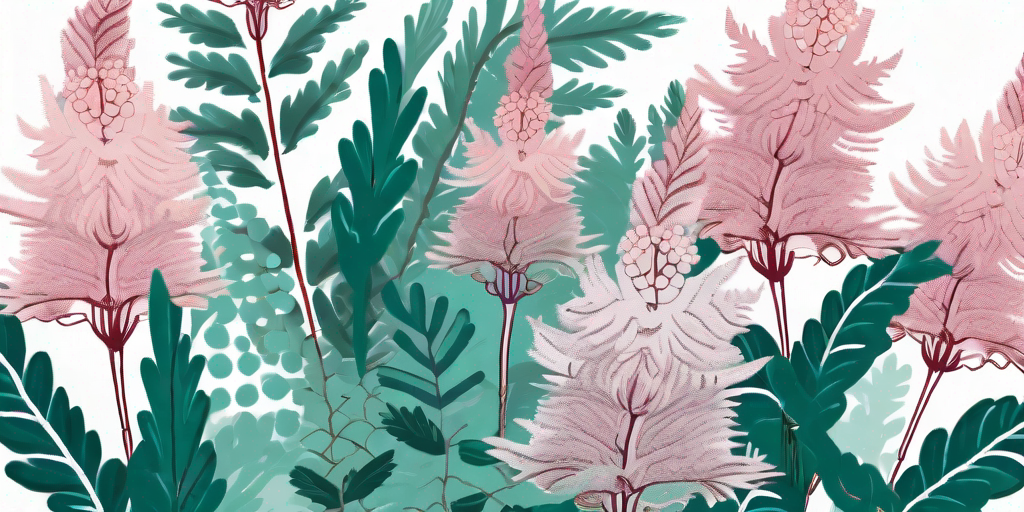
Astilbe, the belle of the shade garden, is a perennial flower that's as easy to grow as it is beautiful. With feathery plumes and fern-like foliage, it's a showstopper that can turn any shady corner into a vibrant, eye-catching spectacle. But how do you grow and care for this gorgeous flower? Buckle up, green thumbs, because we're about to dive into the world of Astilbe.
Understanding the Astilbe
Before we get our hands dirty, let's take a moment to appreciate the Astilbe in all its glory. Native to Asia and North America, this perennial is known for its tall, feathery plumes that come in a variety of colors, including white, pink, red, and purple. It's a shade-loving plant, which means it's perfect for those dark corners of your garden where other flowers fear to tread.
But the Astilbe is more than just a pretty face. It's also a hardy plant that can withstand cold temperatures and thrive in hard-to-grow areas. So, if you've been looking for a flower that's as tough as it is beautiful, the Astilbe might just be your new best friend.
Planting Your Astilbe
Choosing the Right Spot
Remember when we said that Astilbe is a shade-loving plant? Well, we weren't kidding. This flower prefers shady to partially shady areas, so choose a spot in your garden that gets plenty of shade throughout the day. However, Astilbe can tolerate some morning sun, so don't be afraid to plant it in a spot that gets a little morning light.
As for the soil, Astilbe prefers a well-drained, moist soil that's rich in organic matter. So, before you plant your Astilbe, make sure to amend your soil with plenty of compost or well-rotted manure. This will not only provide your Astilbe with the nutrients it needs to grow, but also improve the soil's drainage and moisture retention.
Planting the Astilbe
Once you've chosen the perfect spot, it's time to get planting. Dig a hole that's twice as wide and just as deep as the root ball of your Astilbe. Place the plant in the hole, making sure that the top of the root ball is level with the soil surface. Then, backfill the hole with soil, firming it gently around the plant.
After planting, give your Astilbe a good watering and apply a layer of mulch around the base of the plant. This will help to retain moisture and keep the roots cool, which is essential for the Astilbe's growth.
Caring for Your Astilbe
Watering and Feeding
Astilbe is a thirsty plant, so make sure to water it regularly, especially during dry periods. The soil should always be moist, but not waterlogged. Overwatering can lead to root rot, which is a surefire way to kill your Astilbe.
As for feeding, Astilbe is a heavy feeder, so apply a balanced, slow-release fertilizer in the spring and again in the summer. This will provide your Astilbe with the nutrients it needs to produce those gorgeous, feathery plumes.
Pruning and Dividing
Pruning your Astilbe is a piece of cake. Simply cut back the flower stalks after they've finished blooming. This will not only keep your Astilbe looking tidy, but also encourage more blooms.
Every few years, you may need to divide your Astilbe to keep it healthy and vigorous. To do this, simply dig up the plant in early spring or fall, divide the root ball into sections, and replant each section in a new spot. Voila! More Astilbe for your garden.
Common Astilbe Problems and How to Solve Them
Despite its hardy nature, Astilbe can sometimes run into a few problems. But don't worry, we've got you covered. Here are some common Astilbe problems and how to solve them:
- Brown Leaves: This is usually a sign of underwatering. Remember, Astilbe likes its soil moist, so make sure to water it regularly.
- Yellow Leaves: This could be a sign of overwatering or poor drainage. Check the soil to make sure it's not waterlogged, and amend it with compost or well-rotted manure to improve drainage.
- Poor Flowering: If your Astilbe isn't producing many flowers, it could be due to a lack of nutrients. Apply a balanced, slow-release fertilizer to give your Astilbe the nutrients it needs to bloom.
Frequently Asked Questions
- Is Astilbe deer resistant? Yes, Astilbe is generally deer resistant, which makes it a great choice for gardens that are frequented by these four-legged visitors.
- Can Astilbe grow in full sun? While Astilbe can tolerate some morning sun, it prefers shady to partially shady areas. Too much sun can scorch the leaves and cause the plant to wilt.
- How often should I water my Astilbe? Astilbe likes its soil to be consistently moist, so water it regularly, especially during dry periods. However, be careful not to overwater, as this can lead to root rot.
And there you have it, folks! A comprehensive guide to growing and caring for the beautiful Astilbe. With its feathery plumes and hardy nature, it's a flower that's sure to bring a touch of beauty and charm to any shade garden. So, what are you waiting for? Get out there and start planting!















